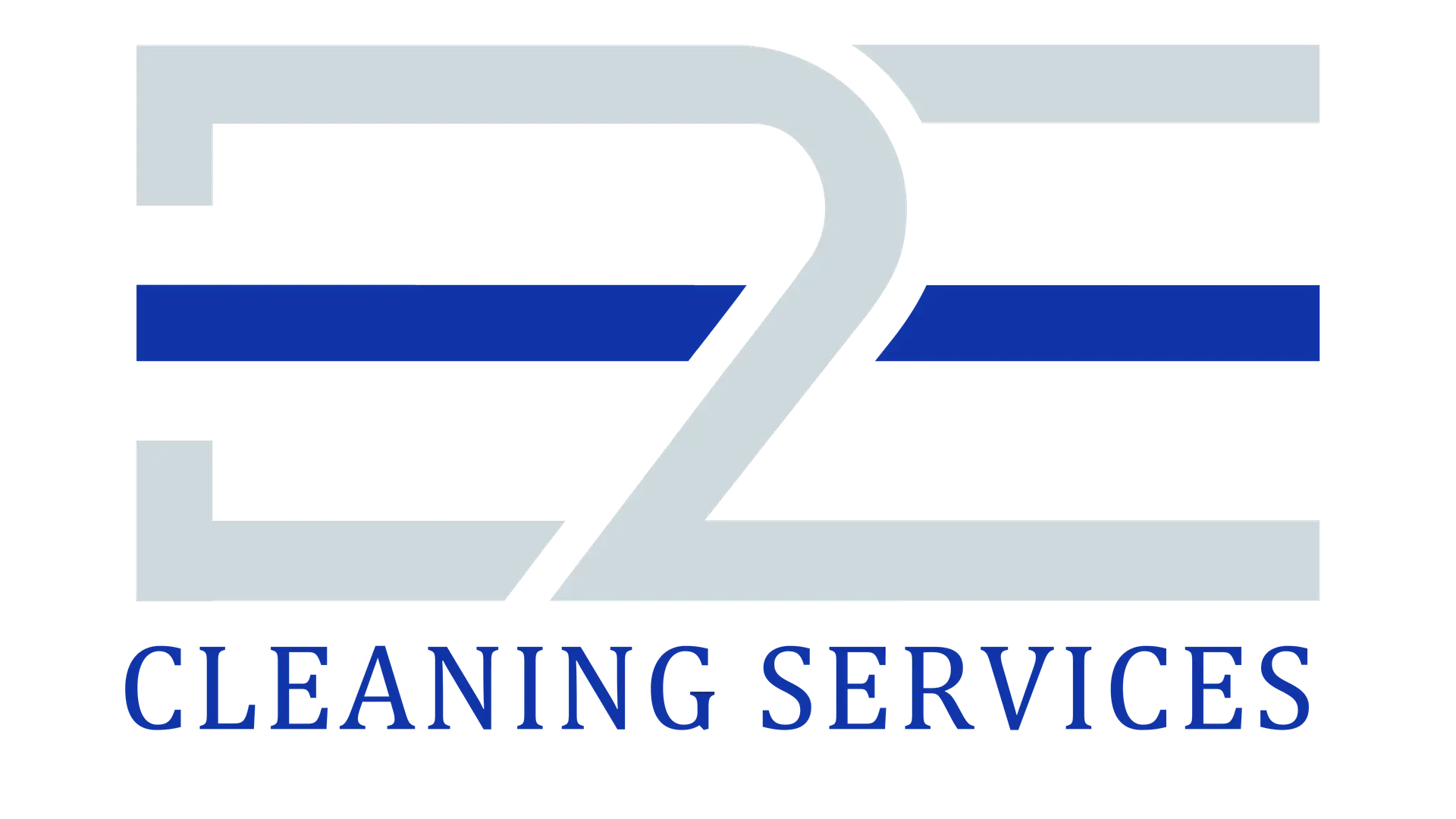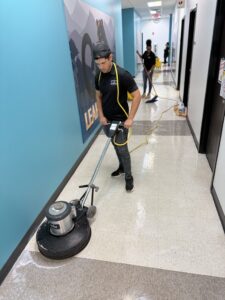This detailed guide aims at showing how strategic commercial cleaning methods can be used to optimize modern facility management. It deals with the incorporation of specialized services, technology solutions and sustainable practices to produce more efficient and cost effective operations of the facilities.
Regardless of whether you are in charge of a small office or a multi-commercial property, this article will provide you with practical ideas on how to improve your facility management systems without compromising the best standards of cleanliness.
Introduction to Modern Facility Management
The commercial cleaning business has undergone a radical change in the last decade. What was once considered a simple need that is focused only on appearance has in recent years taken a central position in the operations of the facilities, affecting the health of employees, efficiency of operations, and brand image all at once.
Facility managers today are faced with more intricate requirements: more rigid health requirements that were introduced following the pandemic, rising labor costs, increasing tenant demands, and the growing need to be sustainable. In response, they are giving up reactive, piecemeal cleaning plans in favour of proactive, comprehensive facility management systems.
Simplification has in this regard become the foundation of an efficient facility management. Organizations are also integrating vendors, unifying protocols and implementing technologies that provide visibility to all operations. This recalibration is more than a cost-cutting exercise; it aims to develop environments that are more productive, safer and more satisfying for occupants.
This development is supported by industry statistics: According to the the latest surveys, 78 % of workers believe that the cleanliness of the workplace is a factor that determines how highly employers regard their staff, while 94 % of clients believe that the cleanliness of the business determines the quaility of itself.
These expectations have changed cleaning into a front-line business priority as opposed to a back-office activity.
Understanding Commercial Cleaning Services
Commercial cleaning is a very wide variety of services that are adjusted to the requirements of different types of facilities, the amount of visitors, and regulations in different sectors. Understanding these variables is critical in coming up with a good facility management strategy.
Basic Janitorial Services usually include ordinary work like:
- Floor vacuuming and mopping
- Cleaning garbage cans
- Cleaning and replenishing of bathrooms
- Cleaning the surfaces that are available
- Cleaning glass and fixtures by spot cleaning
These services focus on the visual and simple hygiene with frequent visits, typically at non-business hours.
In comparison, Comprehensive Facility Management embraces a holistic approach, and merges several services of various types of facilities:
- Preventive maintenance schemes
- Specialty floor care (stripping and waxing, polishing)
- High-dusting and cleaning of air vents
- Interior and exterior window cleaning
- Deep cleaning and extraction of carpets
- Recycling and waste management
- Maintenance of HVAC filters
- Maintenance of lighting
- Organization of pest control
The key difference is strategic management: whereas janitorial services focus on the short-term cleaning needs, a full facility management considers buildings as complex systems that require coordinated maintenance.
This difference is essential to multi-location companies that want consistency among their properties or to facilities with unique requirements, including healthcare facilities, food manufacturing plants, or schools.
Additional distinction is achieved by industry specific adaptations. An example is that healthcare facilities require the skills of infection control procedures and controlled waste disposal, but manufacturing facilities require the skills of industrial degreasing and strict adherence to safety.
It is important to note that the understanding of such nuances allows facility managers to choose services that best fit their operational needs.
The Role of Day Porter Services
Day porter services are a central component of overall facility management and serve as an addition to the classical janitorial cleaning system. Instead of working solely in the evening time, these professionals maintain the spatial order and hygiene during the regular business activity, thus acting as the first line of defense against the possible facility disruptions.
Core Day Porter Responsibilities:
The major duties of day porters include the following tasks:
- Timely reaction to the urgent cleaning needs (spills, accidents)
- Checking and refilling bathroom supplies on a regular basis
- Keeping the lobbies and common areas in shape
- Removing trash containers before they are clogged
- Carrying out daily cleaning of high-touch surfaces
- Establishing and clearing meeting facilities
- Delivery of packages and delivery of mail
- Introducing regular light maintenance procedures, such as changing light bulbs and notifying possible repairs
- Offering support in special occasions or during high occupancy times
In addition to these tactical responsibilities, the strategic worth of day porter support is high. Day porters directly affect the perception of visitors, the productivity of employees, and the continuity of operations through maintaining cleanliness throughout the working hours.
Key Benefits of Day Porter Integration
The key advantages of the incorporation of day porter services include the following:
- Improved Occupant Experience: The fact that cleanliness concerns are addressed immediately, will indicate that the organization is committed to comfort and safety. Empirical studies have shown that the visible cleaning activities enhance the level of occupant confidence in the safety of the facilities by 86%.
- Operational Continuity: Active day porter services significally reduce liability exposure through rapid harzard response, while research shows a 30% decrease in slip-and-fall incidents, ensuring minimal business interruption.
- Asset Protection: Minor problems are proactively maintained to avoid their development into expensive repairs. Statistics show that early intervention may increase the service life of flooring, fixtures, and furnishings by up to 15-20 %.
- Resource Optimization: Since day porters have the ability to change cleaning priorities on a real time basis, resources are deployed where they are needed most as opposed to following strict schedules.
- Brand Enhancement: In businesses that deal with clients, the presence of cleaning staff is a visible indication of a dedication to cleanliness and customer service, which creates consumer trust.
When considering the day porter services, the facility managers must pay close attention to the staffing ratio (one porter to 50,000 75,000 square feet in the office setting), communication procedures, and coordination with the after-hours cleaning crews to ensure smooth transition and standards of cleanliness.
Eliminate facility disruptions during business hours. Click Here
Building an Efficient Cleaning Strategy
An efficient planning of a business cleaning plan requires a methodical, multi-faceted analysis that balances operational requirements, financial aspects and facility-specific details.
When done with a purposeful precision, the process transforms the cleaning activities into a strictly controlled system that is in line with organizational goals.
Assessment Framework:
To start with, a comprehensive facility assessment is to be conducted, which includes the following dimensions:
- Space Classification
- Function: Determine areas by major use and traffic.
- Traffic Patterns: Check the level of activities and the frequency of use.
- Cleanliness Standards: Identify surface specific care standards.
There are critical areas which require more regular cleaning such as healthcare facilities, food preparation areas and there are low traffic areas which require less frequent cleaning such as storage areas.
- Surface Inventory
Identify flooring, wall coverings, and fixture substrates, and select the suitable cleaning agents and procedures. A good example is natural stone, which has significantly different protocols compared to vinyl surfaces. - Occupancy Patterns
Analyze the use of workspace to determine the best cleaning frequencies. Restrooms that receive a lot of traffic might need to be cleaned numerous times during the day, but the office of a private worker might only need to be cleaned twice a week. - Regulatory Requirements
Determine compliance standards that are unique to the industry and affect the cleaning process, e.g. in a healthcare facility, food service facility, childcare facility, or pharmaceutical facility.
Strategic Schedule Development:
On the basis of the above information, develop three levels of cleaning:
- Daily Tasks: Focus on the critical areas of health, high touch surfaces, and visible spaces that affect the image of the facility.
- Weekly Tasks: Address the places that are likely to have built-up dust, spot carpet clean, and thoroughly sanitize the areas that are not used regularly.
- Monthly: Plan more intensive maintenance like carpet extraction, floor refinishing, high dusting and interior window washing.
- Quarterly/Annual: Schedule intensive jobs, such as exterior window cleaning, parking-lot maintenance and deep upholstery extraction.
Protocol Standardization:
Develop and elaborate cleaning procedures that outline the following:
- Acceptable products on each surface type
- Equipment and tools needed
- Procedures to follow in doing common things
- Quality standards and inspection standards
- Safety standards and measures
Such consistency ensures that the same standards are applied irrespective of the staff and provides clear expectations to the cleaning staff and the facility stakeholders.
Resource Allocation:
Optimize resource deployment by:
- Skill matching between cleaner and complexity of the task
- Bundling tasks that are similar in order to reduce the number of equipment changes
- Setting time standards of routine procedures
- Development of effective movement patterns using facilities
- Equal distribution of work among the team members
Lastly, an effective cleaning plan should be dynamic; there should be review mechanisms periodically to assess the effectiveness, feedback and adaptation to changing facility needs or new best practices.
Technology Integration in Facility Management
The use of technology has revolutionized the way commercial cleaning is done, replacing labor-intensive processes with data-driven ones that increase efficiency and improve quality, and accountability.
Competitive advantages are achieved through strategic technology integration, which also helps to overcome industry challenges that are persistent, such as labor shortages and rising service expectations.
Core Technology Solutions:
- Computerized Maintenance Management Systems (CMMS) is the brain of the facility operations and it provides:
- Creation of work orders, tracking, and closure of work orders
- Preventive maintenance scheduling
- Asset lifecycle management
- Supplies and equipment inventory control
- Performance analytics and reporting
- Mobile Applications bring system capabilities to the frontline workers by:
- Electronic checklists and task check-off
- Photography of work done
- Live interaction with management
- Safety and cleaning protocols accessibility
- Time and attendance tracking
- The IoT Sensors and Smart Building Technology provide a level of visibility into the state of facilities that has never been seen before:
- Monitoring of occupancy to focus on high-use areas
- Just-in-time restocking sensors on the supply levels
- Ventilation control through air quality monitoring
- Water leakage detection to act instantly
- Traffic pattern analysis of the best cleaning routes
- In suitable applications, robotics and Automation complement human endeavors:
- Large open area autonomous floor scrubbers
- UV disinfection systems to be sanitized thoroughly
- Chemical accuracy automated dispensing systems
- Robotic vacuum systems to work after hours
Implementation Considerations:
Effective integration of technology requires proper planning that should cover:
- Interoperability: Choose solutions that can interact with the systems that are already in place instead of forming data silos.
- Scalability: Select platforms which can scale with your organization and be able to meet the changing needs.
- User Adoption: Invest in training programs to instill confidence in all users including the management and front line staff.
- ROI Calculation: Establish explicit success metrics that extend beyond the initial cost, such as labor efficiencies, quality enhancements, and customer satisfaction.
- Data Security: Ascertain that systems are in line with the organizational security requirements especially when dealing with building access information or customer data.
The most effective implementations use an incremental strategy, starting with the basic systems and introducing functionality as teams get used to technology-enabled processes. Such a gradual implementation enables organizations to capitalize on the successes and have minimal interference with the current operations.
Cost-Effective Solutions for Different Business Sizes
Commercial cleaning plans must align with an organization’s scale and resources. What works for large corporations with dedicated facility services will not be applicable to smaller enterprises or medium-sized firms.
The outline below provides scalable strategies that provide reliable results in different sizes of operations.
Small Business Solutions (Under 10,000 sq ft):
Small businesses are characterized by flexibility and accuracy of resource allocation:
- Service Bundling: Bundle services (regular cleaning and quarterly carpet cleaning) in order to get volume discounts.
- Shared Services: In multi tenant buildings, organize with other occupants to share the cost of day porters.
- Task-Based Contracts: Transition to task-based billing as opposed to time-based billing in order to guarantee value.
- Supply Management: Concentrate buying and inventory management to avoid wastage.}
- Hybrid Staffing: Combine routine in-house cleaning with professional deep cleaning services.
The philosophy of small businesses is to set priorities that focus on limited resources on areas that have a high impact. Client-facing areas and reception areas are generally areas that need more attention as compared to back offices or storage areas.
Mid-Market Approaches (10,000-100,000 sq ft):
The medium-sized organizations are able to implement advanced systems and maintain cost control:
- Zone-Based Cleaning: Separate facilities into areas of cleanliness with the proper frequency of each.
- Performance-Based Contracts: Design contracts based on performance outputs as opposed to performance activities.
- Technology Investment: Introduce simple management software to monitor the completion of work and quality.
- Optimization of Equipment: Choose multi-purpose equipment that can be used in many cleaning activities.
- Preventative Programs: Put in place proactive maintenance to increase the life time of assets.
At this level, it is necessary to come up with standardized cleaning specifications to ensure consistency and to enable proper comparisons of vendors during the bidding process.
Enterprise Solutions (Over 100,000 sq ft or multiple locations):
Economies of scale and systems-based approaches are available to large organizations:
- Integrated Facility Services: Put cleaning, maintenance, security and other services together in comprehensive contracts.
- Centralized Management: Use enterprise (CMMS) to know where something is across locations and analytics.
- National/Regional Contracts: Multi-site portfolios to be used to achieve favourable rates and a uniformed service offering.
- Specialized Teams: Develop specialized teams to perform routine jobs as opposed to specialized procedures.
- High-Tech: Introduce IoT sensors, robotics and predictive maintenances.
Enterprise solutions must have strong quality management systems that are audited regularly, have continuous improvement processes and key performance indicators that are linked to organizational objectives.
Budget Optimization Strategies for All Sizes:
At whatever level, there are some principles that make cost efficiency without reduction in quality:
- Quality-Based Supplier Selection: Select suppliers on total value and not lowest bid.
- Proper Frequency Calibration: Cleaning frequency should be aligned to the real needs and not to the random dates.
- Cross-Training: Train staff to be versatile so that they can minimize specialized services needs.
- Green Cleaning: Introduce sustainable activities that minimize the use of chemicals and wastes.
- Energy Efficiency: Clean at low utility rate times where possible.
The best cost management strategy is one that aims at cutting waste, time, materials and effort, as opposed to merely cutting service levels, which usually leads to increased long-term costs due to deferred maintenance and faster asset depreciation.
Conclusion
The strategic advantage of simplifying the commercial cleaning operation through effective facility management is a very important aspect in the current competitive business environment.
Facility managers can transform cleaning into a value-generating process by understanding the entire range of the available services, implementing the right technology, scaling the solutions to the needs of the organization, and focusing on sustainable practices.
The way to success is through a systems approach where cleaning strategies are aligned to the overall organizational goals. This view goes beyond short-term cost-saving to appreciate the impact of cleanliness on employee productivity, customer perception, asset life and regulatory compliance.
With technological advancement and increasing demands of sustainability, commercial cleaning is undergoing a transformation, and organizations that adapt to the changes will have the advantage of both operational excellence and cost optimization. The future is in the facility managers who do not view cleaning as a commoditized service but as an inseparable part of organizational success.






